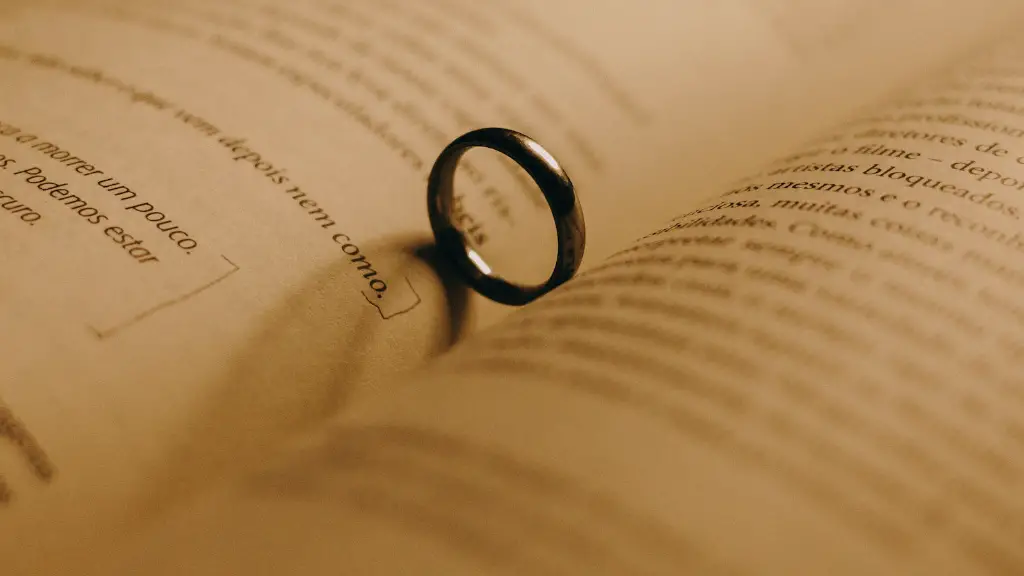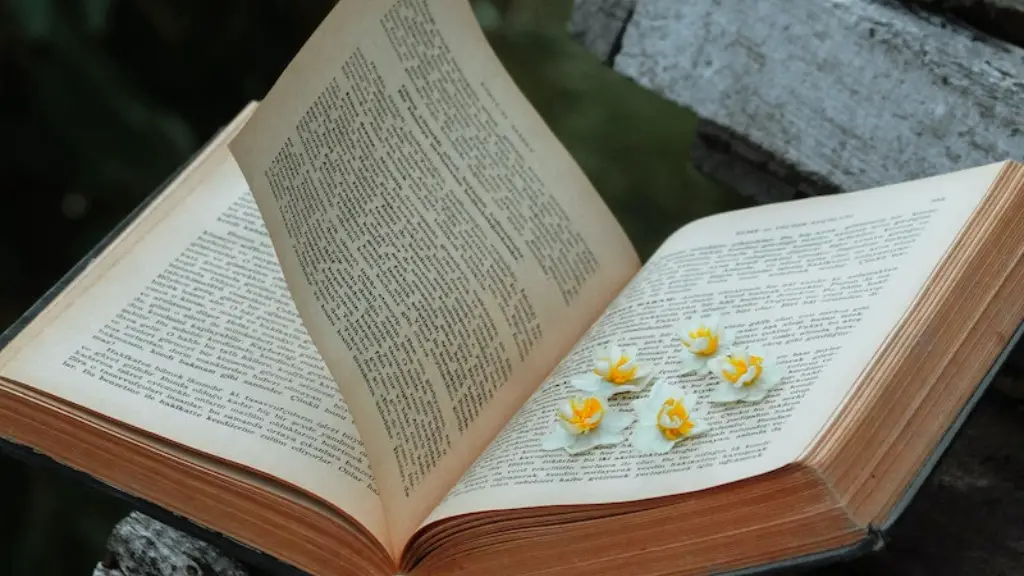What is Movement in Poetry?
Movement in poetry is the flow of thought and emotions that can be felt by the reader when they read a poem. This movement can be in the form of sound, rhythm, structure, imagery, and even the overall message of the poem. Movement in poetry is often created by syllables and other poetic techniques, such as metaphor and alliteration, which allow the poet to create a rhythm or powerful sound that resonates with the reader. Movement in poetry is a major part of the literary art form, as it helps to convey a certain emotion or idea to the audience and can make a poem more interesting, engaging, and enjoyable to read.
The use of poetic techniques such as alliteration, assonance, and consonance, as well as literary devices such as simile and metaphor, are all key components of movement in poetry. Alliteration is the repetition of similar sounds at the beginning of words. Assonance is the repetition of particular vowel sounds. Consonance is the repetition of particular consonant sounds. All three of these techniques can be used to create a rhythmic sound or flow and can add to the movement of a poem.
Similes and metaphors are also great tools for creating movement in poetry. Similes compare two things with each other and use the words “like” or “as”. Metaphors do not use these words, but implicitly compare two things. Both of these literary devices help to create vivid imagery in the mind of the reader and can add to the overall movement of a poem.
However, it’s not just poetic techniques and literary devices that create movement in poetry. The overall structure of a poem is also important. Structure in a poem helps to create a shape or pattern that guides the reader through the poem, and the use of stanzas and line breaks can add to the movement of a poem. Additionally, the words used in a poem are very important in creating the flow and movement that is felt by the reader. By using words carefully and intentionally, a poet can create a powerful and evocative poem that will move the reader.
In conclusion, movement in poetry is an essential part of the literary art form. Through the use of poetic techniques, literary devices, structure, and careful word choice, a poet is able to create a poem that resonates with the reader and can evoke powerful emotions. Movement in poetry can turn an ordinary poem into something extraordinary and make it an engaging and enjoyable read.
Imagery and Meaning in Movement
The use of imagery in poetry can greatly add to the overall movement of a poem. Through the use of metaphors, similes, and personification, poets are able to create vivid mental images in the minds of their readers that help to bring the poem to life. This visual imagery can be used to illustrate a point or to evoke feeling in the reader, and it can help to add power and meaning to the poem. Imagery can also be used to create a contrast between the idea being expressed and reality, which can be quite powerful. For example, a poet might compare a person to a mountain in order to illustrate their strength, or they could use an image of a bird to symbolize hope or freedom. Imagery can be used in many different ways to create movement and to give a poem greater meaning and depth.
In addition to imagery, the choice of words used in a poem is also vital to creating movement and meaning. By carefully selecting words that evoke a certain emotion or idea, a poet can hint at things that are not directly stated in the poem. This helps to add a sense of mystery and intrigue to the poem, which can draw in the reader further. For example, the poet might use the words ‘beauty’ and ‘sorrow’ to hint at sadness and loss. Poets can use their choice of words in many different ways to create movement, meaning, and atmosphere in their poems.
Sound and Rhyme in Movement
The sound of a poem is one of the most important parts of creating movement in poetry. The sound of a poem can be affected by the words used, the rhythm, and the use of alliteration, assonance, and consonance. By carefully crafting a poem, a poet can create a sound and rhythm that resonates with the reader and creates movement in their mind. Rhyme can also be used to create movement, as it helps to give a poem a cadence and flow that makes it more pleasant to read. This rhythm can help to evoke emotion in the reader and can also help to give the poem a more cohesive feel.
The sound of a poem is also important for conveying the overall message of the poem. A poet can manipulate the sound of their poem to emphasize certain ideas or to draw the reader’s attention to something specific. For example, a poet might use a particularly loud and emphatic line to express their anger or frustration, or they could use a softer, more peaceful cadence to express joy and contentment. The sound of a poem is a powerful tool for conveying meaning and emotion, and it can be used to create movement in the mind of the reader.
Aesthetic Pleasure and Movement
The use of aesthetic pleasure in poetry creates movement and can make a poem more enjoyable to read. When a poem has a pleasing rhythm, structure, or imagery, it can engage the reader and make them want to read more. By crafting a poem in such a way, a poet can create an aesthetic pleasure that both draws the reader in and adds to the overall movement of the poem.
The use of poetic devices such as rhyme, meter, and assonance also help to create a sense of aesthetic pleasure that can add to the movement of a poem. For example, the use of rhyme can help to make a poem sound more harmonious, and the use of meter can give a poem a structured and organized feeling. The combination of these poetic devices can create a powerful and engaging sound that draws the reader in and helps to create movement in their mind.
Finally, the imagery used in a poem can also contribute to the movement and aesthetic pleasure of a poem. The use of vivid descriptions can engage the reader and make them feel like they are a part of the poem. This engagement with the imagery can help to add to the movement of the poem and make it an enjoyable and entertaining read.
The Power of Movement in Poetry
The power of movement in poetry should not be underestimated. By carefully crafting a poem, a poet can create a powerful and evocative experience for the reader that will stay with them long after they have finished reading the poem. A poem with good movement can have a lasting impact on the reader and can evoke strong emotions. Through the use of poetic techniques, literary devices, structure, and sound, a poet can create a poem that moves the reader and resonates with them deeply.
The power of movement in poetry lies in its ability to connect with the reader on an emotional level. By creating a poem that has a fluid and poetic sound, a poet can create an atmosphere that is intense and engaging. This intense atmosphere stimulates the emotions of the reader and can make them feel connected to the poem in a powerful way. This can help to create a lasting impression and can also cause the reader to think more deeply about the message of the poem.
In addition to connecting with the reader emotionally, movement in poetry also has the power to tell stories, evoke memories, and transport the reader to another time or place. This can make a poem even more powerful and can help to create a lasting and powerful impression that the reader will remember for a long time. Through the power of movement, a poet can create an experience for the reader that is both enjoyable and meaningful.
The Role of Movement in Contemporary Poetry
The role of movement in contemporary poetry is an important factor to consider. In today’s world, where people have shorter attention spans and less time to read, movement in poetry is more important than ever. By creating a poem that has a strong rhythm, sound, and imagery, a poet can create an engaging experience for the reader that will keep them interested and draw them in deeper. This ability to move and engage the reader is an essential part of contemporary poetry and is necessary for making a poem stand out in today’s crowded literary landscape.
Additionally, movement in poetry can help to convey a message to the reader. By using poetic techniques, structure, and sound to create movement, a poet can provide subtle hints and nuances that will help to enhance the meaning of the poem and make it more impactful. This can help to ensure that the poem resonates with the reader and that their message is effectively conveyed.
Lastly, movement in poetry can help to create a unique and unforgettable experience for the reader. By creating a poem that is both engaging and enjoyable to read, a poet can ensure that the reader is captivated by the experience and that the poem will stay with them for a long time. This uniqueness can help to make the poem stand out and can help to make the reader feel a deep connection to the poem.




